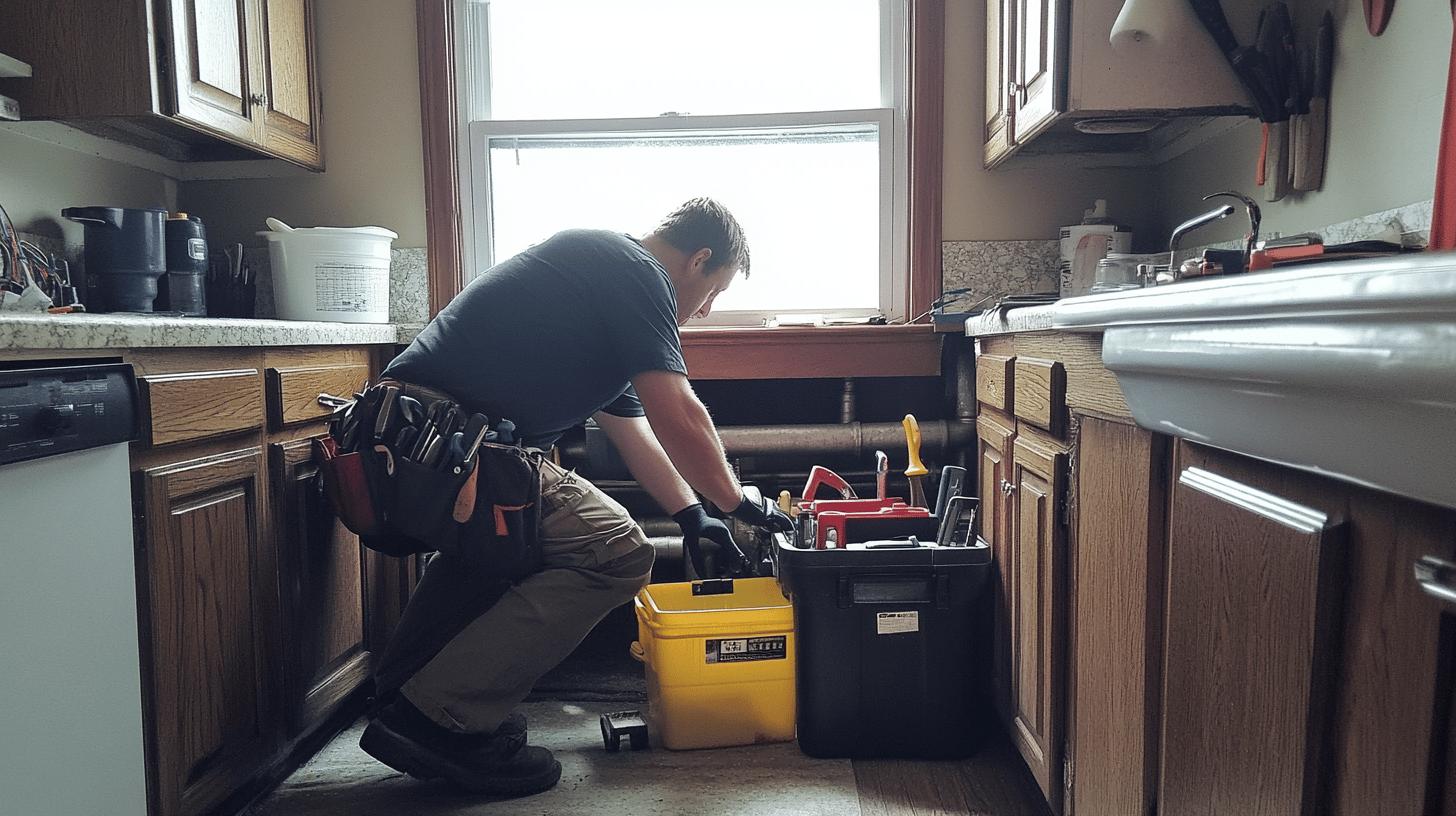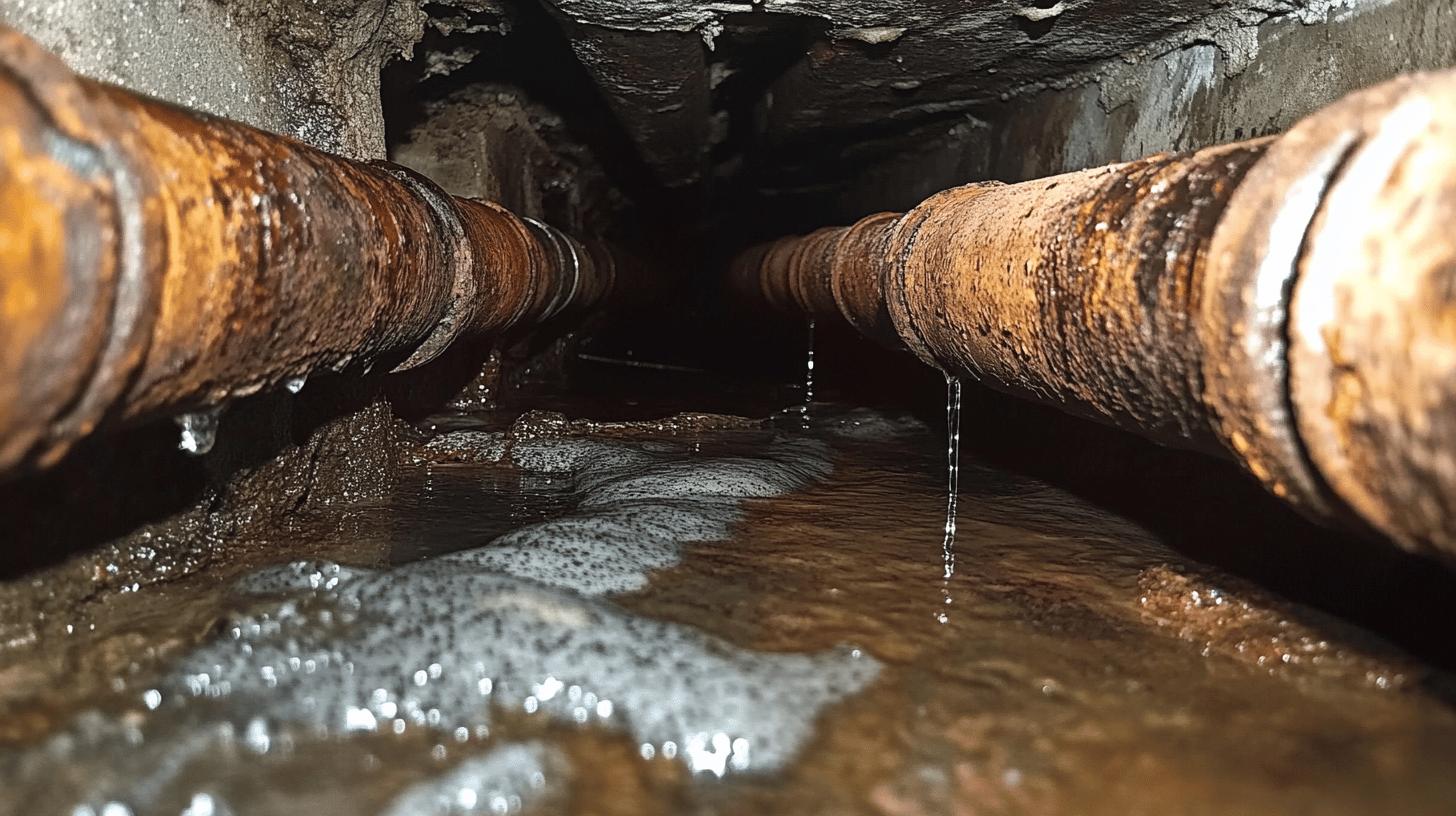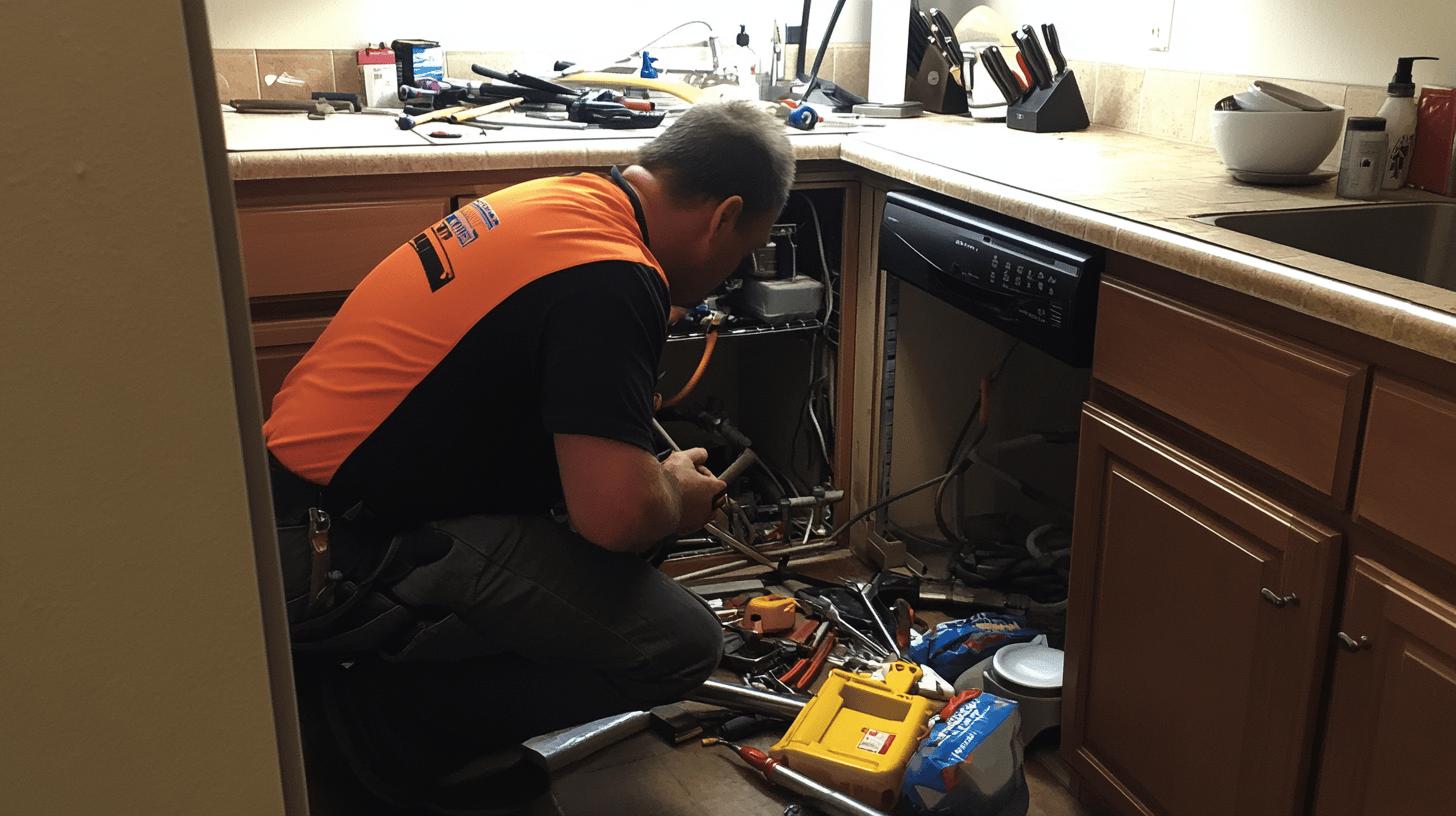TL;DR:
- Yes, you can replace all pipes in a house, especially if old or problematic.
- Process includes inspection, material selection, planning, execution, and final inspection.
- Duration: 2 to 7 days, affected by house size and complexity.
- Costs range from $2,000 to $15,000; influenced by pipe type, layout, labor rates, and permits.
- Common pipe types: Copper (durable), PEX (flexible, cost-effective), PVC (budget-friendly, not for hot water).
- Signs for replacement: Frequent leaks, discolored water, low pressure.
- Benefits include improved water quality, steady pressure, and increased home value.
- Hiring professionals is recommended for safety and efficiency; DIY can lead to issues.
Are you thinking about replacing all the pipes in your house? If your home is older or you keep having plumbing problems, it might be time to consider it. Although replacing all the pipes can seem like a big job, it can really help make your plumbing system more reliable.
This process usually means getting to the pipes behind your walls, which might involve some demolition, and it typically takes about two to seven days. In this article, we’ll go over when you should think about a full pipe replacement, the basic steps involved, and what to expect in terms of timing and preparation. This will help you figure out if replacing all the pipes in your house is the right choice for you.
Can You Replace All the Pipes in a House?
Yes, you can replace all the pipes in your house. This is often necessary for older homes or if you’re dealing with constant plumbing problems. If your house has issues like regular leaks, low water pressure, or discolored water, it might be time for a complete pipe overhaul. Replacing old pipes is really important to avoid water damage and health risks, especially if your home has lead or galvanized steel pipes.
To start, you’ll want to inspect the plumbing system to identify any problems. Then, choose materials based on what your home needs, considering things like durability and cost. After that, plan out your project, including the timeline, budget, and any permits you might need. When it’s time to replace the pipes, you’ll remove the old ones and install the new ones. Finally, do a last inspection to make sure everything meets safety standards.
The whole process usually takes about two to seven days, depending on the size of your house and how complicated the job is. Be ready for possible disruptions, like temporary water outages or limited access to certain areas. With good planning and the right professionals, you can make the process smooth, minimize mistakes, and ensure everything follows local codes.
Cost Implications of Replacing House Pipes

Re-piping costs can vary widely, usually ranging from $2,000 to $15,000. Several factors affect the price, including the size of your house, the materials used for the pipes, and labor expenses. Larger homes require more materials and work, which increases the cost. Labor prices can differ based on where you live and how complicated the job is. Additionally, permits might add to the overall expenses.
Key factors affecting cost include:
- Pipe Type: Options like copper, PEX, or PVC vary in price.
- House Layout: Complex layouts need more labor and materials.
- Local Labor Rates: Costs differ by region and labor market.
- Permits: Local regulations might add extra costs.
To keep costs in check, get estimates from various contractors to find competitive pricing. Pick materials that offer a good balance between cost and durability. Good planning can help you avoid surprise expenses and ensure your plumbing lasts longer.
Types of Pipes for Home Plumbing Replacement
Copper pipes are super durable and can last over 50 years. They handle high pressure and temperatures well, making them great for both hot and cold water. However, they can be expensive to buy and install. Still, they’re reliable and resist bacteria.
PEX pipes are a cheaper and more flexible choice. They’re easier to install, especially in tight spaces, which can save on labor costs. PEX also resists scale and chlorine, so they hold up well in water lines. Plus, they’re less likely to freeze or burst compared to copper. Just be careful, as UV light can damage PEX, so keep it out of direct sunlight.
PVC pipes are budget-friendly and resist corrosion, making them good for drainage and vent lines. They’re lightweight and easy to work with and can handle chemicals well. However, they’re not suitable for hot water because heat can warp them, so they’re often used alongside other materials in plumbing systems.
Comparing copper, PEX, and PVC:
- Copper offers durability and longevity.
- PEX provides flexibility and ease.
- PVC is cost-effective for non-heated uses.
Your choice depends on specific needs, budget, and home conditions.
| Pipe Type | Advantages | Disadvantages |
|———–|—————————————–|————————————|
| Copper | Durable, long lifespan, bacteria-resistant | High cost, complex installation |
| PEX | Flexible, easy to install, freeze-resistant | UV sensitive, not for outdoor use |
| PVC | Cost-effective, corrosion-resistant | Not suitable for hot water lines |
Signs Indicating the Need for Pipe Replacement

If you’re seeing frequent leaks, discolored water, or low water pressure, it might be time to replace your pipes. Leaks often mean there are hidden problems and that your pipes are wearing out. Rusty or discolored water indicates corrosion, which can harm both the quality of your water and the strength of the pipes. Low water pressure usually points to leaks or blockages that need to be addressed quickly.
- Frequent leaks can lead to damage and mold.
- Rusty water signals pipe corrosion.
- Low pressure may point to blockages or leaks.
If you ignore these issues, it can lead to higher costs and more damage. Over time, leaks can hurt your home’s structure, and corroded pipes will only make plumbing problems worse. Replacing old pipes can help you avoid expensive repairs and keep your plumbing safe and efficient. Professional plumbers can effectively diagnose and fix these problems for you.
Benefits of Replacing Old Pipes
Replacing old pipes improves water quality by removing harmful elements like lead and rust that can seep in from aging pipes, which are a health risk. New pipes guarantee clean, safe water, making your home healthier.
Upgrading your plumbing also stabilizes water pressure and enhances system reliability. Old pipes can block and leak, leading to flow problems and constant repairs. New pipes provide consistent pressure, which benefits appliances and fixtures while reducing the chances of plumbing failures.
Additionally, updating your pipes can increase your home’s value and safety by minimizing the risk of leaks and damage. Buyers tend to prefer homes with modern plumbing because it gives them peace of mind. Addressing plumbing issues early on can save you from costly repairs and protect your home’s structure. Hiring professionals to do the work ensures everything is handled efficiently, maximizing these benefits.
DIY vs. Professional Plumbing Services

For a full-house pipe replacement, it’s best to hire professionals because of the complexity and safety involved. They have the skills and tools needed for handling intricate plumbing systems, ensuring everything is done properly and safely. Professionals are also up to date with building codes, which helps prevent costly mistakes and violations. Plus, they provide work warranties, so you can have peace of mind knowing the job is covered.
- Wrong installation can cause leaks and damage.
- Code violations risk fines and extra fixes.
- Lack of tools can slow progress and lower quality.
- Poor technique might damage structures.
Experts ensure that everything complies with regulations, which helps reduce legal and safety risks. Their experience allows them to anticipate and resolve potential issues, saving you trouble down the line. Plus, with work guarantees, you’re covered if any problems arise after installation, ensuring high standards and long-term benefits.
Planning for a Successful Plumbing Replacement
Successful projects begin with getting the necessary permits, which ensures compliance with codes and helps you avoid fines. Setting realistic timelines simplifies the project and minimizes disruptions. By prioritizing these factors, you can address challenges early and improve overall efficiency.
- Get permits to meet local codes.
- Schedule inspections for safety compliance.
- Ensure easy access to plumbing parts.
- Consult professionals for advice.
Inspections and evaluations are key to a successful project. They help identify potential issues early and provide a complete assessment of your system’s needs. These steps ensure safety and lead to lasting results, improving the reliability and efficiency of your plumbing.
Final Words
Considering replacing all the pipes in your house involves understanding the challenges and benefits of the project. This is especially important for older homes or those facing ongoing plumbing problems. Knowing the costs, types of pipes available, and the signs that indicate a replacement is needed will help you make informed decisions. Hiring professionals ensures you get expert help and keeps the work safe, while good planning can help you avoid expensive mistakes. By tackling these factors, you’ll not only improve your home’s functionality but also boost its long-term value and safety.
FAQ
Can you replace all the pipes in a house without removing walls?
Replacing all pipes without removing walls is challenging. Typically, access holes in drywall are needed to reach pipes. This approach minimizes wall removal, reducing disruption and time.
What are the cost implications of replacing house pipes?
Replacing house pipes can range from $2,000 to $15,000. Costs depend on house size, pipe material, labor, and local rates. Obtaining multiple estimates helps manage expenses effectively.
Is it worth it to repipe a house?
Re-piping can be worth it, especially for older homes or those with frequent plumbing issues. Benefits include improved water quality, increased reliability, and enhanced home value.
How long does it take to replace all the pipes in a house?
Replacing all the pipes typically takes two to seven days. Duration depends on house size and work complexity, but thorough planning can streamline the process and minimize disruptions.
Can you replumb a house without significant disruption?
While some disruption is unavoidable, careful planning minimizes impact. Creating access points in strategic areas limits the need for extensive wall or floor removal, keeping disruption manageable.
What should I expect when repiping a house?
When repiping, expect an initial inspection, material selection, and planned replacement. Temporary water shut-offs and some drywall opening are common. The final step is a comprehensive inspection of the new system.
What are common signs indicating the need for pipe replacement?
Common signs include frequent leaks, rust-colored water, and reduced water pressure. Ignoring these can lead to increased damage and repair costs over time.
What are the benefits of replacing old pipes?
Replacing old pipes enhances water quality by eliminating contaminants. It also improves pressure and reliability and may increase home value by reducing leak risks.

